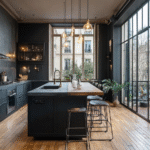The Americans with Disabilities Act of 1990 (ADA) is all about access. This civil rights law prohibits discrimination on the basis of disability especially in the case of physical barriers that can cut off access to needed goods and services.
Some of the more noticeable effects of the passing of this law were felt with the appearance of more wheelchair-friendly architectural designs in public buildings and open spaces. People have begun to think ahead by securing Certified Access Specialist, CASp inspections and making sure that appropriate changes are done on their property so that they can accommodate all kinds of clients.
Here are a few accessible design features that promote ADA compliance.
1. Ramps
Providing access means making sure that entryways are able to accommodate those who use mobility devices. It is very rare to find a house or building that does not have any kind of steps or stairs inside and around. In order to give equal access to persons with disability, steps, especially at entrances, should be accompanied by wheelchair ramps that follow the recommended slope and elevation according to ADA specifications. Ramps should be at least 36 inches wide and slip resistant.

2. Handrails
In addition to ramps, handrails also provide significant help to persons who require the use of mobility devices. When ramps rise higher than 6 inches, handrails must be added to help those who will use these inclined surfaces. The distance of 36 inches must be maintained between the handrails so that the ramps still have a width of at least 3 feet.
3. Alternative Accessible Entrances
For older buildings where it is just not possible to add ramps to main entrances, alternative accessible entrances must still be provided. An alternative accessible entrance must be available for use independently of the main entrance and at all hours that the same is open.

4. Signage
Signage is very important in accessible design for two reasons. Firstly, signs and labels are markers for features dedicated to assist persons with disability exclusively, like at parking lots where spaces are allocated for their use. Secondly, accessible signage addresses the needs of certain disabilities. It is not enough to make signs big enough and clear enough for those who have seeing disabilities. It is also good to provide raised braille signage for those who have complete vision impairment and pictograms for those who have learning disabilities.
Adhering to the ADA means becoming aware of other people’s needs and creating solutions to overcome these challenges. Accommodating the needs of persons with disabilities will not just help you avoid tiresome lawsuits; it will also create more business and pave the way for expansion.
The Department of Justice amended the ADA Standards in 2010 to make it easier for property owners to meet the ADA’s requirements. You can pursue alterations to your building according to your financial capacity. However, financial limitation does not excuse you from compliance nonetheless. If you want to make sure that your business has no blind spots when it comes to ADA requirements, you should consider getting the opinion of an accessibility expert today.






